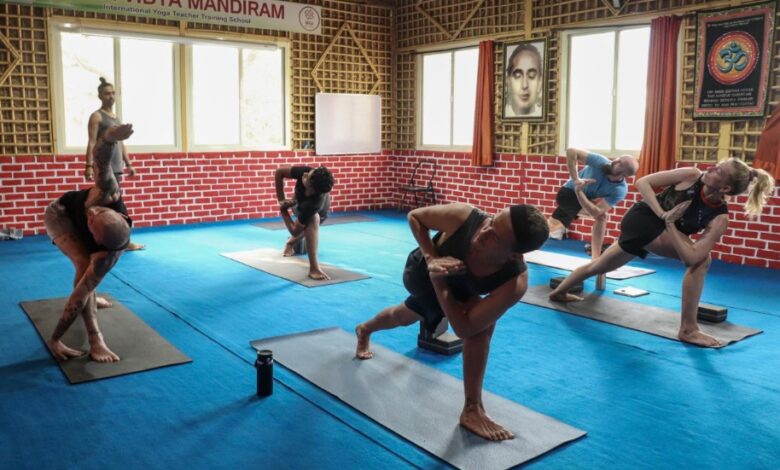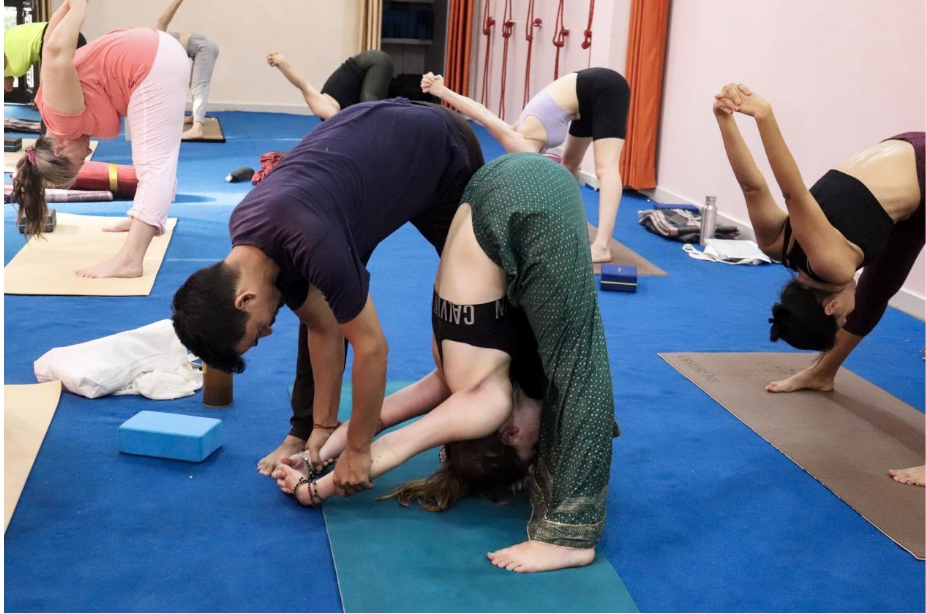Step by Step Journey: How to Become a Certified Yoga Instructor in 2025

A yoga instructor is a teacher and guide who leads students through yoga practices that integrate physical postures, breathing exercises, and sometimes meditation to promote physical, mental, and emotional well-being. Role of a Yoga Instructor can be characterized based on these qualities: A teacher who is able to guiding yoga sessions, creating class sequences, teaching breathwork (pranayama), incorporating mindfulness and meditation, providing a safe and supportive environment, being a source of motivation, qualities of a good yoga instructor, and work environment and opportunities. Yoga instructors may teach in various settings, such as:
- Yoga studios and gyms
- Yoga Schools, community centers, and corporate offices
- Retreats, workshops, and private lessons
- Online classes through platforms or personal business
Being a yoga instructor is a fulfilling role for those passionate about wellness, self-growth, and helping others cultivate balance and well-being in their lives. It often goes beyond just teaching—it’s a lifestyle of embodying and sharing the benefits of yoga with others. Along with these mentioned qualities of a yoga teacher it is important to have a certification from a worldwide recognized yoga school. Therefore, we are going to focus on becoming a certified yoga instructor.
To become a certified yoga instructor in 2025, here’s a step-by-step guide that covers everything from training to certification and practical experience:

Step 1: Explore Different Yoga Styles
- Research Various Yoga Styles: Familiarize yourself with popular styles like Hatha, Vinyasa, Ashtanga, Iyengar, Kundalini, and Yin. Knowing which style resonates with you will guide your choice of training.
- Take Classes: Experiment with classes in different styles to gain hands-on exposure and develop an understanding of each style’s approach and philosophy.
Step 2: Choose a Yoga Teacher Training (YTT) Program
- Identify Certification Standards: Select a 200 hour Yoga Teacher Training program recognized by Yoga Alliance (YA) or a similar reputable organization, as these certifications are widely accepted.
- Decide on the Program Format: YTT programs can be completed in-person, online, or as a hybrid. Choose the one that best fits your schedule and learning style.
- Determine Training Length: Standard certifications start with 200-hour programs. Ensure that the course includes fundamentals like asanas, anatomy, teaching methodology, philosophy, and practice teaching.
- Budget for Costs: A 200-hour YTT program can range from $1,500 to $5,000 or more. Factor in additional costs if the training is residential or requires travel.
- Location: The title of the “Capital of Yoga” is often attributed to Rishikesh, a city in northern India nestled in the foothills of the Himalayas along the banks of the Ganges River. Rishikesh has been a spiritual and yoga hub for centuries, attracting yogis, gurus, and spiritual seekers from all over the world. Therefore, you can choose a 200 hour Yoga Teacher Training in Rishikesh.
Step 3: Begin Your Personal Yoga Practice
- Establish a Consistent Practice: Aim for regular practice to build strength, flexibility, and mindfulness, and to deepen your understanding of the practice.
- Document Your Progress: Maintain a journal to track your growth, strengths, and areas of improvement. This can be a great reference during your training.
Step 4: Enrol in a 200-Hour Teacher Training Program
- Dive Into Training: Engage deeply in each session, whether it’s about anatomy, philosophy, or sequencing. Pay special attention to practical sessions where you get to practice teaching.
- Practice Teaching with Peers: Most programs include practicum hours, where you’ll receive feedback on your teaching style, adjustments, and communication.
- Build Connections: Engage with instructors and peers to foster relationships and create a support network in the yoga community.
Step 5: Apply for Yoga Alliance Certification
- Register with Yoga Alliance: Upon completing the 200-hour program, you can become a Registered Yoga Teacher (RYT) through Yoga Alliance.
- Submit Training Documentation: Provide proof of training and certification details to Yoga Alliance for verification.
- Pay Membership Fees: Yoga Alliance charges annual registration fees, so consider this a part of your ongoing professional expenses.
Step 6: Start Teaching Yoga
- Offer Free or Donation-Based Classes: Teaching friends, family, or local groups can help you practice your skills and build confidence.
- Apply at Studios and Gyms: Many studios look for newly certified instructors to lead beginner classes.
- Create a Routine: Teach classes regularly to refine your skills, develop your voice as an instructor, and gain feedback from students.
Step 7: Continue Your Education and Specialize
- Consider Advanced 300-Hour Training: A 300-hour program can deepen your expertise and, combined with your 200-hour certification, lead to a 500-hour certification.
- Pursue Specialized Certifications: If you’re interested in specific areas like prenatal, yoga therapy, or trauma-informed yoga, specialized certifications are available to expand your skills.
- Attend Workshops and Retreats: Participate in workshops, online courses, or yoga retreats to stay inspired, learn new techniques, and connect with other instructors.
Step 8: Develop Your Professional Brand
- Build an Online Presence: Share your practice through social media, YouTube, or a personal website to connect with potential students and build your reputation.
- Create Marketing Materials: Consider developing a personal brand, including a logo, business cards, and a class schedule for studios or private clients.
- Network and Collaborate: Connect with other instructors and wellness professionals for referrals and opportunities to co-host classes or workshops.
Step 9: Stay Committed to Personal Practice and Self-Care
- Maintain Your Practice: Regularly practicing yoga will keep you grounded and connected to what you teach.
- Seek Mentorship and Feedback: Learning from experienced teachers can improve your teaching style and help you grow professionally.
- Prioritize Self-Care: Teaching can be demanding, so prioritize time to recharge and keep yourself balanced.
By following these steps, you can become a certified yoga instructor in 2025 and build a fulfilling teaching career. The journey typically takes six months to two years, depending on your pace and commitment.



